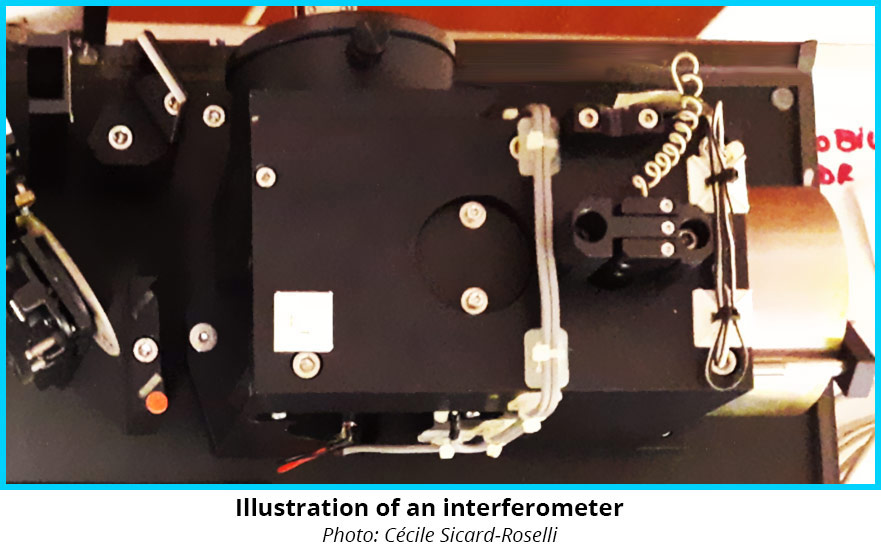Interferometer
Current instruments are all equipped with an interferometer, the most famous being the Michelson interferometer.

Combined with Fourier transform signal processing, the interferometer makes it possible to excite the molecules with a polychromatic source and thus to record a spectrum very quickly. It allows for the accumulation of several spectra, thus increasing the signal to noise ratio. The interferometer is also the unit governing the spectral resolution.
Within the interferometer, the incident polychromatic beam is divided into two equal parts by the beam splitter and then sent towards two distinct mirrors, a stationary one and a moving one. The movement of the moving mirror creates a delay between the two beams. They then pass through the sample and reach the detector.
The resolution depends on the capacity to induce a delay between these two beams.
Being polychromatic, the incident beam excites different vibrations of the molecule. These different excitations create interferences caused by delay in reaching the detector, thus resulting in an interferogram. An IR spectrum is obtained after Fourier transform processing of this interferogram.






